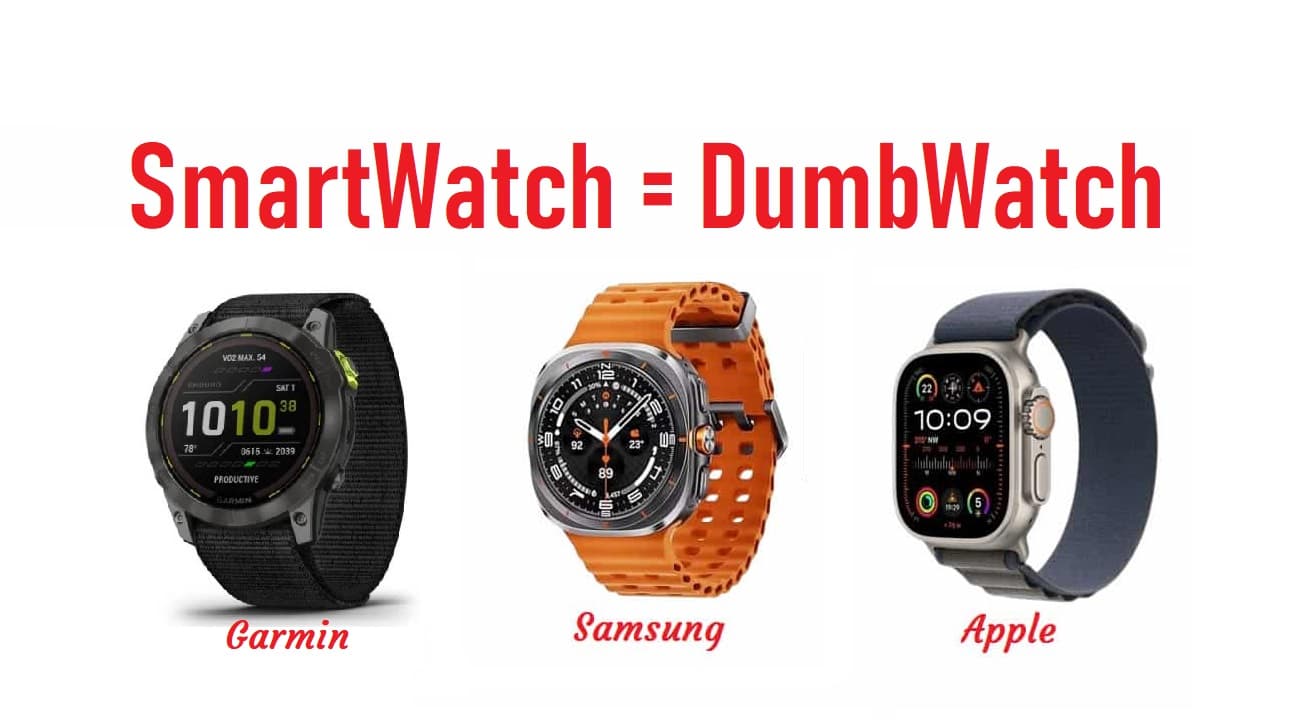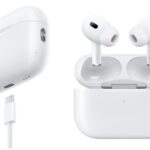Choosing a smartwatch is not just about picking the right style or features. Battery life is crucial because it determines how often you need to recharge your device. If you’re tired of constantly plugging in your smartwatch or want to make sure your device lasts through the day, this guide will help you understand how to choose a smartwatch with exceptional battery life and how to extend it.

Why Battery Life Matters in a Smartwatch
Battery life is more than just a convenience; it affects your overall experience with a smartwatch. Here’s why it’s important:
- Convenience: A longer battery life means fewer interruptions for charging and more time using your smartwatch.
- Reliability: You can count on your smartwatch to perform essential functions like tracking workouts or receiving notifications without frequent recharges.
- Flexibility: With extended battery life, you can use your smartwatch on long trips or during busy days without worrying about finding a charging spot.
How to Choose a Smartwatch with the Best Battery Life
When selecting a smartwatch, consider these factors for the best battery life:
- Operating System: Different OSes impact battery performance. RTOS (Real-Time Operating System) typically offers longer battery life compared to Wear OS.
- Display Type: OLED or AMOLED screens tend to consume more power. Opting for a smartwatch with a less power-hungry display can improve battery life.
- Battery Size: Larger batteries generally provide longer usage time. However, the physical size of the smartwatch may also increase.
Why RTOS Watches Have Superior Battery Life
RTOS watches are known for their superior battery life due to:
- Optimized Performance: RTOS is designed for efficiency, running only the essential functions and avoiding unnecessary background processes.
- Lower Power Consumption: RTOS watches typically use less power-hungry components and display technologies.
- Extended Battery Life: Some RTOS watches can last several weeks on a single charge, making them ideal for users who prioritize battery longevity.
If you value longer battery life and don’t need a wide range of apps, RTOS watches might be the right choice for you.
Impact of Always-On Displays on Battery Life
Always-on displays are convenient, but they can drain your battery faster. Here’s how:
- Continuous Illumination: The screen remains lit at all times, consuming more power compared to screens that turn off when not in use.
- Higher Brightness: Bright screens require more energy to maintain visibility, especially in bright conditions.
Consider turning off the always-on display feature or using a dimmer setting to extend your battery life.
Why Wear OS Watches Have Limited Battery Life
Wear OS watches often have shorter battery life due to:
- Resource-Intensive Apps: Wear OS supports a wide range of apps and features, which can drain the battery more quickly.
- Advanced Features: High-resolution displays, continuous background activity, and frequent updates contribute to faster battery drain.
- Power-Hungry Components: Features like GPS and continuous heart rate monitoring use more power.
If you choose a Wear OS watch, be prepared for more frequent charging, especially if you use many features.
Smartwatch Battery Optimization Tips
To get the most out of your smartwatch battery, follow these tips:
- Adjust Screen Brightness: Lower the brightness or use auto-brightness to save power.
- Disable Unnecessary Features: Turn off features you don’t need, such as GPS or Wi-Fi, when not in use.
- Use Power-Saving Modes: Many smartwatches have power-saving settings that reduce functionality to extend battery life.
- Manage Apps: Close or uninstall apps that run in the background and consume battery.
How Smartwatch Apps Affect Battery Performance
Smartwatch apps can impact battery life in several ways:
- Background Activity: Apps that run in the background can drain the battery by continuously using resources.
- Frequent Updates: Apps that update frequently or sync data regularly consume more power.
- Notifications: Apps that send frequent notifications can also affect battery life.
Be mindful of the apps you install and their settings to minimize their impact on battery performance.
Best Practices for Extending Smartwatch Battery Life
Here are some additional best practices to extend your smartwatch’s battery life:
- Update Firmware Regularly: Firmware updates often include optimizations for battery life.
- Turn Off Vibration Alerts: Vibration can use additional power, so consider turning it off or using it sparingly.
- Use Minimalist Watch Faces: Complex watch faces with lots of animations or data can drain the battery faster.
Top Smartwatches with Multi-Week Battery Life
If you’re looking for a smartwatch that lasts for weeks on a single charge, consider these models:
- Garmin Instinct Solar: Offers solar charging capabilities, extending battery life significantly.
- Amazfit Bip U Pro: Known for its impressive battery life of up to 9 days on a single charge.
- Withings Steel HR: Provides up to 25 days of battery life with its hybrid design.
These smartwatches are great choices if you prefer less frequent charging.
How to Improve Battery Life on Wear OS Watches
To enhance battery life on Wear OS watches:
- Enable Battery Saver Mode: This mode limits functionality to conserve power.
- Reduce Screen Timeout: Shorten the time before the screen turns off.
- Disable Always-On Display: Turn off the feature to save battery life.
- Manage App Syncing: Reduce the frequency of app syncs or updates.
Implementing these changes can help you get more use between charges.
Comparing Battery Life of Wear OS vs. RTOS Watches
When comparing Wear OS and RTOS watches:
- Wear OS Watches: Generally offer shorter battery life due to their advanced features and app support. Battery life can range from one to two days, depending on usage.
- RTOS Watches: Typically provide much longer battery life, ranging from several days to weeks, due to their efficiency and simplified operating systems.
Choose based on your need for functionality versus battery longevity.
Role of Software Optimization in Smartwatch Battery Life
Software optimization plays a crucial role in battery life:
- Efficient Code: Well-optimized software uses resources more efficiently, extending battery life.
- Regular Updates: Software updates often include battery optimizations and bug fixes that can improve performance.
- App Management: Proper management of apps and their background activity can reduce battery drain.
Ensure your smartwatch software is up-to-date and optimized for the best battery performance.
Pros and Cons of Smartwatch Power-Saving Modes
Power-saving modes can help extend battery life but come with trade-offs:
- Pros:
- Extended Battery Life: Reduces power consumption and extends usage time.
- Basic Functionality: Allows essential functions to remain operational.
- Cons:
- Limited Features: Some features may be disabled, affecting usability.
- Reduced Performance: May slow down the watch or reduce responsiveness.
Evaluate whether the benefits of power-saving modes align with your needs.
Understanding Battery Drain Issues in Smartwatches
Battery drain issues can be caused by:
- Background Apps: Apps running in the background can consume power.
- High Display Brightness: Bright screens use more energy.
- Frequent Syncing: Constant syncing of data can drain the battery.
Identifying and addressing these issues can help improve battery life.
Why Battery Size Matters in Smartwatch Performance
Battery size affects performance in the following ways:
- Longer Battery Life: Larger batteries generally last longer between charges.
- Device Size: Larger batteries may result in a bulkier smartwatch.
- Charging Frequency: Bigger batteries reduce the frequency of charging.
Choose a smartwatch with a battery size that balances longevity with comfort.
How to Troubleshoot Battery Issues in Smartwatches
If you experience battery issues:
- Restart Your Watch: Sometimes a simple restart can resolve battery problems.
- Check for Updates: Ensure your software is up-to-date.
- Factory Reset: As a last resort, a factory reset can fix persistent issues.
Troubleshooting can help identify and resolve battery problems effectively.
How Firmware Updates Affect Smartwatch Battery Life
Firmware updates can impact battery life by:
- Introducing Optimizations: Updates may include improvements for better battery management.
- Fixing Bugs: Resolving bugs that cause excessive battery drain.
- Adding New Features: New features may affect battery consumption.
Keep your smartwatch firmware updated to benefit from the latest optimizations and fixes.
Tips for Charging Your Smartwatch Efficiently
To charge your smartwatch efficiently:
- Use the Official Charger: Avoid third-party chargers that may be less efficient.
- Charge to Optimal Levels: Aim to keep your battery between 20% and 80% for longer battery health.
- Avoid Overcharging: Disconnect once fully charged to prevent overcharging.
Following these tips can help maintain battery health and performance.
How Different Watch Faces Affect Battery Life
Watch faces can impact battery life:
- Complex Faces: Animated or data-heavy watch faces can drain the battery faster.
- Simple Faces: Minimalist faces with fewer animations and details generally use less power.
Choosing a simple watch face can help extend battery life.
Best Smartwatches for Heavy Use
For heavy use, consider smartwatches with robust battery life:
- Samsung Galaxy Watch 6: Known for its strong battery performance and comprehensive features.
- Garmin Fenix 7: Offers excellent battery life and is built for intensive activities.
- Amazfit GTR 3 Pro: Features long battery life and a range of advanced functions.
These models are designed to handle frequent use and demanding features.
How Smartwatch Sensors Impact Battery Drain
Sensors in smartwatches, such as GPS, heart rate monitors, and SpO2 sensors, can impact battery life:
- Continuous Monitoring: Sensors that work continuously use more power.
- High Precision: Advanced sensors that provide accurate readings may consume additional energy.
Understanding the impact of sensors can help you manage their use to conserve battery life.
Conclusion
Choosing a smartwatch with the best battery life involves understanding how different factors affect performance. From operating systems to display types, every element plays a role in how long your smartwatch will last on a single charge. By considering these aspects and following best practices for battery management, you can ensure that your smartwatch meets your needs and stays reliable throughout the day. Happy smartwatch shopping!









